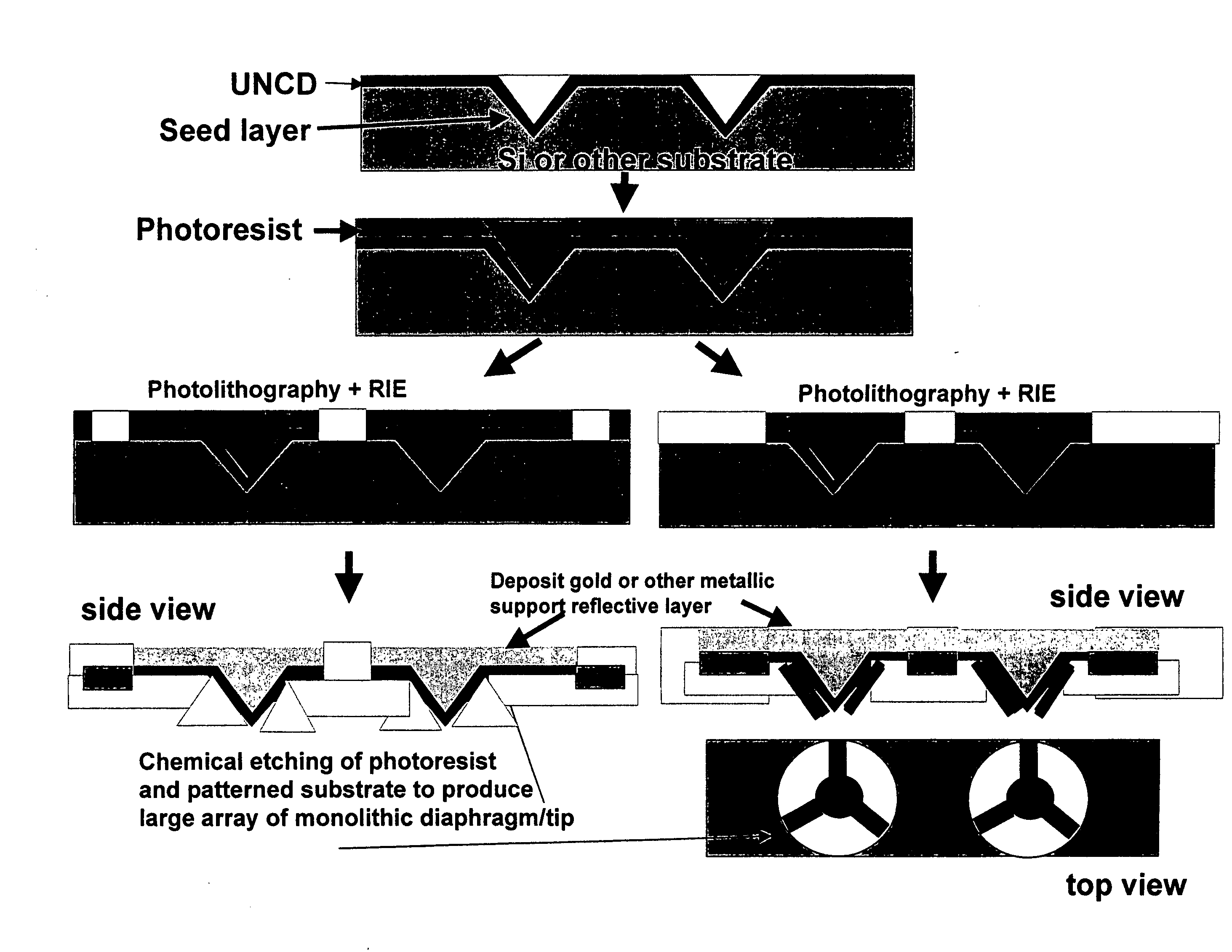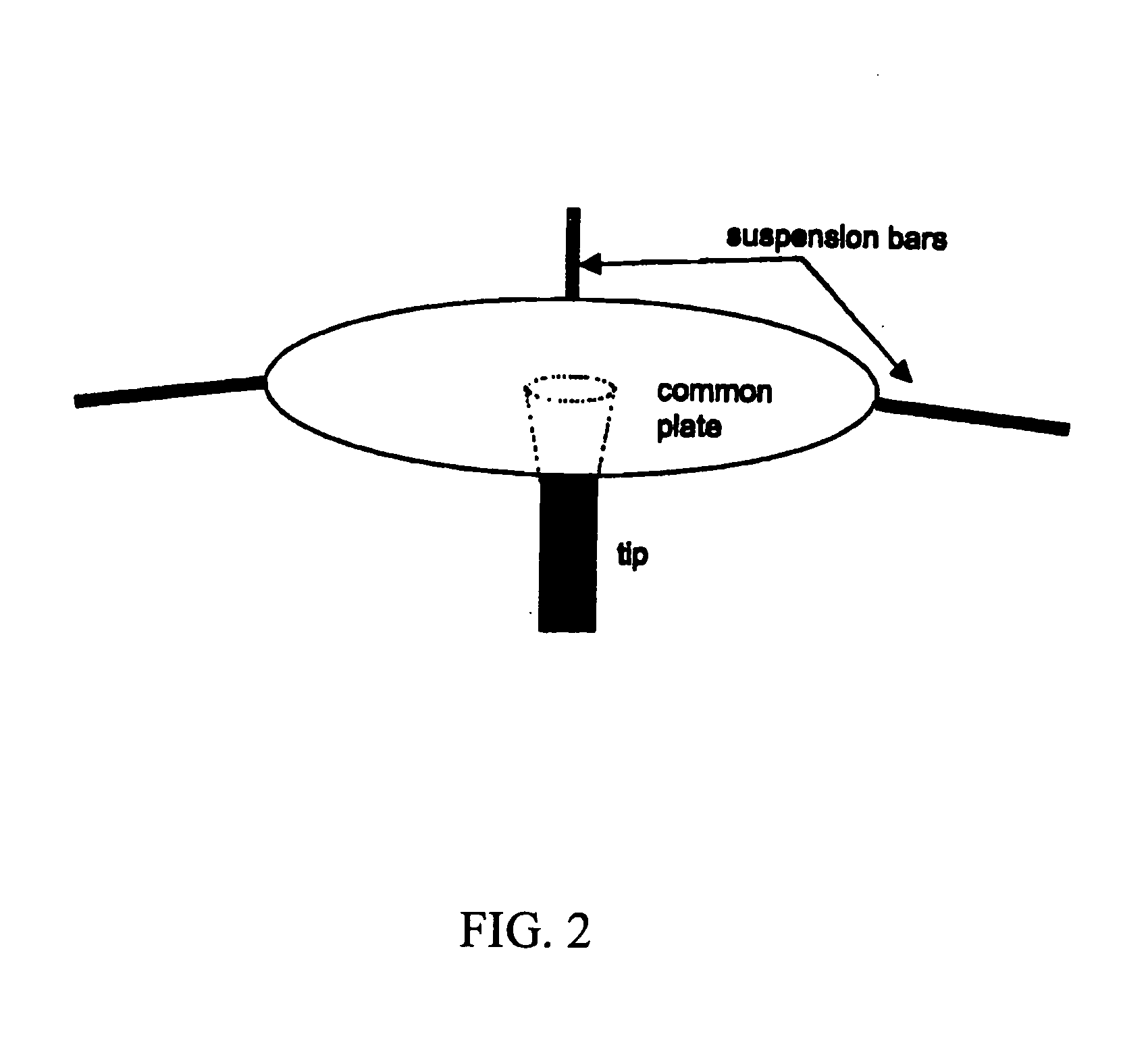Novel ultrananocrystalline diamond probes for high-resolution low-wear nanolithographic techniques
a nanolithography and ultrananocrystalline technology, applied in the field of three-dimensional probes, can solve the problems of limiting the lifetime, accuracy and reproducibility of afm measurements, and high hardness and high coefficient of friction, and achieve the effects of reducing the accuracy of afm measuremen
- Summary
- Abstract
- Description
- Claims
- Application Information
AI Technical Summary
Benefits of technology
Problems solved by technology
Method used
Image
Examples
Embodiment Construction
[0016]UNCD films, as discussed by R. Rameshan, Thin Solid Films 1999, 340, 1-6; T. A. Friedmann, J. P. Sullivan, J. A. Knapp, D. R. Tallant, D. M. Follstaedt, D. L. Medlin, P. B. Mirkarimi, Appl. Phys. Lett. 1997, 71, 3820-3822; A. R. Kraus, O. Auciello, D. M. Gruen, A. Jayatissa, A. Sumant, J. Tucek, D. C. Mancini, N. Moldovan, A. Erdemir, D. Ersoy, M. N. Gardos, H. G. Busmann, E. M. Meyer, M. Q. Ding, Diamond Relat. Mater. 2001, 10, 1952-1961; a) H. D. Espinosa, B. C. Prorok, B. Peng, K.-H. Kim, N. Moldovan, O. Auciello, J. A. Carlisle, D. M. Gruen, D. C. Mancini, Exp. Mech. 2003, 43, 256-268; b) H. D. Espinosa, B. Peng, B. C. Prorok, N. Moldovan, O. Auciello, J. A. Carlisle, D. M. Gruen, D. C. Mancini, J. Appl. Phys. 2003, 94, 6076-6084; and A. Erdemir, C. Bindal, G. R. Fenske, C. Zuiker, R. Csencsits, A. R. Krauss, D. M. Gruen, Diamond Relat. Mater. 1996, 6, 31-47, all incorporated herein by reference, with grain sizes in the 2-5 nm range, retain most of the surface and bulk pro...
PUM
 Login to View More
Login to View More Abstract
Description
Claims
Application Information
 Login to View More
Login to View More - R&D
- Intellectual Property
- Life Sciences
- Materials
- Tech Scout
- Unparalleled Data Quality
- Higher Quality Content
- 60% Fewer Hallucinations
Browse by: Latest US Patents, China's latest patents, Technical Efficacy Thesaurus, Application Domain, Technology Topic, Popular Technical Reports.
© 2025 PatSnap. All rights reserved.Legal|Privacy policy|Modern Slavery Act Transparency Statement|Sitemap|About US| Contact US: help@patsnap.com



